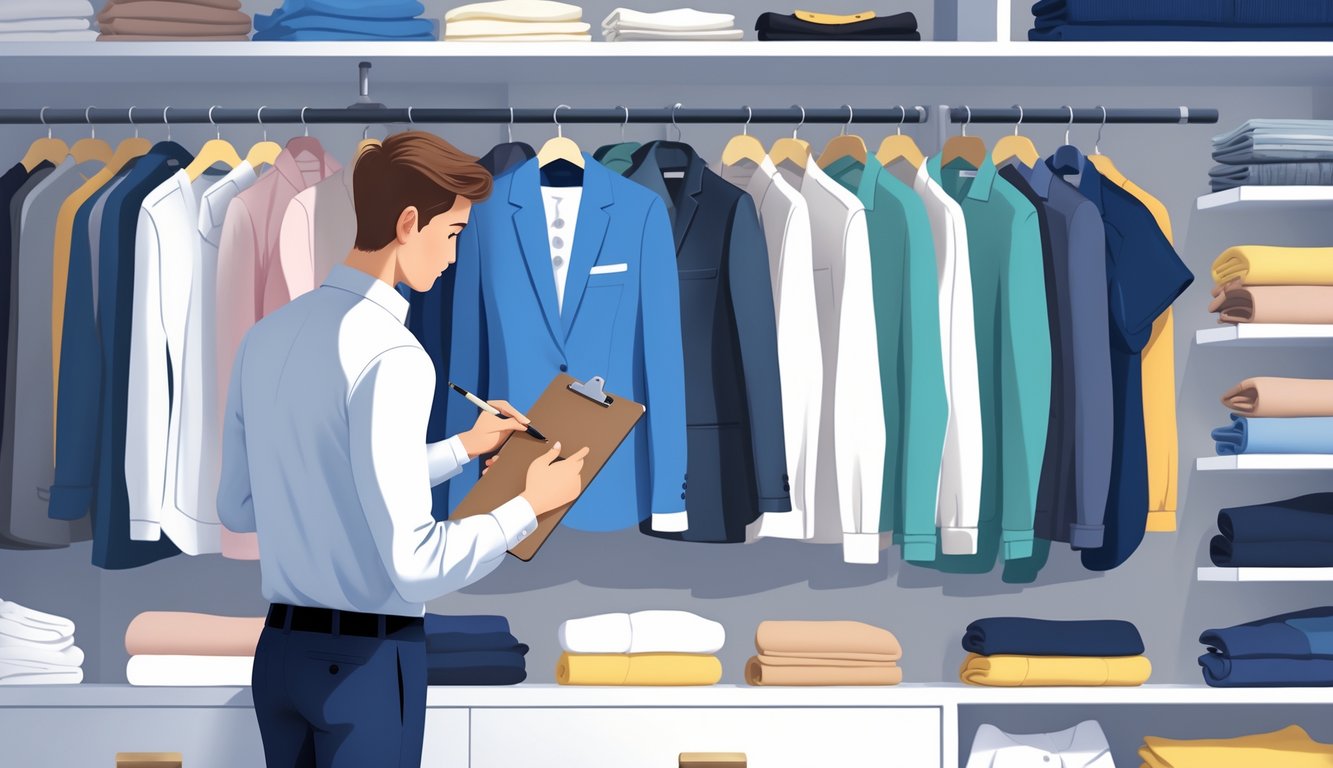
How to Maintain a Clutter-Free Closet
I keep shoving shoes under sweaters and then, shocker, can’t find anything. One day I remembered reading somewhere that reminders for closet audits (like, every few months) actually help. Does anyone ever follow those? I don’t. Not until the closet’s basically a disaster zone and I’m yelling at a pile of scarves.
Daily and Monthly Habits
Okay, so honestly, nobody tells you how “minimalist” wardrobes turn into chaos overnight. I drop clothes on the floor, sometimes pick them up, sometimes just step over them for a week and pretend it’s fine. Suddenly, all my “essentials” vanish into laundry limbo. And it’s not just shirts—there’s always a crumpled receipt, a broken pair of sunglasses, some random tote bag that seemed useful once.
Now I set a timer for fifteen minutes (sometimes I actually start it, sometimes I just stare at my phone) and throw stuff back where it sort of belongs. Big closet clean-outs? I try every couple months, if I remember. Supposedly, experts are big on seasonal audits, but honestly, I barely manage that. If something’s ripped or stained, I toss it—no dramatic goodbyes. I keep a donation bag by the door, otherwise I’ll just move stuff from one corner to another for eternity.
Shoes are the worst. Why do I have six pairs of nearly identical black flats? I try to cull them monthly. If I didn’t wear it, it goes. People online say to label baskets, but I just scribble on sticky notes and half of them fall off anyway. Good enough.
Adapting Storage Solutions
Those fancy closet systems with velvet hangers and sliding drawers? Waste of money, at least for me. I bought a shoe rack once—one week later, my boots collapsed the whole thing. Hooks, clear bins, double rods—they’re fine, but only if I don’t overstuff them. Otherwise, it’s just organized chaos.
I have to rotate stuff by season or nothing fits. Sweaters on the top shelf in summer? They magically turn into a mountain of shorts by July. Professional organizers say to empty just one section at a time and check what I actually wear. I try. Sometimes I lose the labels on my storage bins and just guess what’s inside. Not ideal.
It’s not about having the perfect box or folding like a YouTube pro. I just flip hangers, stack shirts, and quit pretending I’ll ever master that Marie Kondo fold. The only thing that makes a difference is getting rid of stuff—like, three puffy jackets I never touch? Gone.
Staying Mindful With Future Purchases
I open my closet, see five white button-downs, and still buy another one every sale season. Why? No clue. Maybe Instagram brainwashing, maybe I just like pretending I’ll be a “capsule wardrobe” person. Never happens. Sometimes I ask myself out loud if I even wore something twice last year. Usually, I can’t remember.
I try to keep an inventory in my notes app—badly. I jot down brands, how often I wore stuff, inspired by those closet audit people who log everything and find out how little they use half their clothes. Most of my “must-haves” end up in the donation pile after eight months. Supposedly, you’re supposed to get rid of something if you want to buy something new. I try, but, uh, it’s a work in progress.
Impulse buys? I tell myself to wait 48 hours before checking out. Sometimes I do. Sometimes I don’t. My closet is still overflowing, but at least it’s not as bad as it was (except for socks—where do they all come from?). Point is, if something new isn’t replacing something old, it’s just clutter.
Building a Versatile Wardrobe That Reflects You
My closet looks like a thrift store exploded, and nothing matches. Then, weirdly, I realize the “basics” I keep buying barely get worn. Turns out, my actual style shows up in the stuff I keep after every clean-out, not in the “essentials” everyone says I need.
Choosing Quality Over Quantity
Staring at a pile of cheap shirts, the good stuff always wins. My jeans from 2018 are still kicking; some $9 tee died after two washes. That black blazer in real wool? Feels different, lasts longer. One Of A Style says to ditch fast fashion and trends, and honestly, yeah, it’s less wasteful.
Nobody at the store admits this, but brands with guarantees or repairs make me care more about what I own (Patagonia, for example, fixed my jacket three times and I’m not embarrassed). My test: if I wouldn’t grab it for an emergency, it’s just taking up space. I’d pick one solid pair of loafers over five trendy sneakers any day.
Curating for Seasonal Needs
I’ve tried wearing summer linen in January. Didn’t work. Stores drop heavy sweaters in September, but it’s still 70 degrees. So now I stick to basics that layer—neutral tees, a windbreaker, jeans that work all year.
Basics get boring, but curating means swapping out stuff for the weather. Even emergency outfits come in sets: something for heat, something for rain, something for when I have to look presentable in a hurry. If a shoe only works for two weeks a year, I donate it. I track how often I wear things—kind of obsessive, but it helps. The pieces that hold up through every season stick around; the rest, I let go.
Boosting Confidence Through a Thoughtful Closet
Not a single dry-clean-only blouse survived my last audit. No one warns you that bags of unworn clothes mess with your mood. I kept sweaters “just in case” and ended up feeling worse every morning.
Feeling Good in What You Own
My laundry basket is proof: I wear the same stretch jeans, three tees, and those sneakers I said I wouldn’t buy, all week. Blazers? They just wrinkle in the back. Why let them stress me out? Apparently, there are clothing psychologists (lol), and they say visible clutter kills confidence.
Doing a closet audit helped me figure out which pieces make me feel good, so I don’t keep defaulting to stuff I hate. It’s not just about tossing “bad” clothes; it’s about picking the jeans that actually fit or the shirt that doesn’t itch. Sustainable stylists say it’s about cutting decision fatigue and self-doubt. Nobody at work talks about this, but once the useless stuff is gone? Getting dressed gets easier. I don’t feel guilty. I just grab what I like.
Embracing an Authentic Personal Style
Yesterday, I wore a jacket I’d ignored for years. If my closet was still a landfill, I’d never have found it. Real talk: personal style gets buried under “just in case” clothes and impulse trends that look good on mannequins, not me. Every audit, the stuff that’s left actually fits my life. When stylists do a professional audit, they ask, “Would you buy this again?” That question’s brutal but honest.
Building a style that’s really mine didn’t mean more shopping. It meant admitting half my closet was for some imaginary version of myself. My new rule: if I haven’t worn it outside in a year, it’s probably not me. The staples I reach for—black cardigan, beat-up boots, blue cotton shirt—make sense. Suddenly, compliments feel real, not forced.



